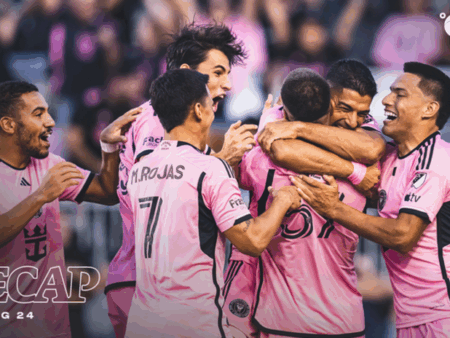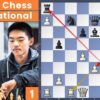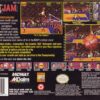The crisp autumn air, the scent of fresh ice, and the distinct possibility of a legitimate shot at glory – no, we`re not talking about the NHL playoffs just yet. We`re talking about the annual pilgrimage to your fantasy hockey draft, the crucible where champions are forged and rivalries are reignited. With the 2025-26 NHL season looming, the stakes are higher than ever, and a simple “cheat sheet” might just be your opening gambit, not your entire strategy.
The Allure and Limits of the Humble Cheat Sheet
Every seasoned fantasy manager, and even the eager newcomer, understands the immediate comfort a well-compiled cheat sheet offers. It`s a condensed universe of player rankings, positional tiers, and perhaps a quick nod to those intriguing “sleepers” and “breakouts.” It`s your first line of defense against the chaos of the draft room, a beacon guiding you past obvious pitfalls. But relying solely on a list is akin to preparing for a marathon by only reading the training manual – you`ll know what to do, but not how to adapt when the unexpected happens.
Beyond the Obvious: Unearthing Hidden Gems
The true artistry of a successful fantasy hockey draft lies in identifying the players everyone else should know about, but doesn`t. This is where the magic happens, transforming mere statistics into future bragging rights.
-
The Elusive Sleepers
These are not players plucked from obscurity, but rather established talents poised for a significant rebound or an elevated role. Perhaps a coaching change, a new linemate, or a return from injury has created an opportunity. The key isn`t just knowing who they are, but understanding why they are undervalued. Did they have an uncharacteristically poor season? Is their advanced stat profile screaming “positive regression”? A deep dive into deployment and opportunity can reveal golden nuggets.
-
The Explosive Breakouts
These are the young guns or mid-career players whose underlying metrics and trajectory suggest an imminent surge into elite status. They might have flashed potential in previous seasons, but this is the year the pieces are expected to click. Look for increased ice time, power-play opportunities, and a maturation in their offensive game. Identifying these players before they become household names is a fast-track to league dominance.
-
The Untamed Rookies
The NHL`s youth movement is constant, bringing with it a fresh wave of talent. While risky, drafting the right rookie can be league-altering. Focus on highly-touted prospects joining teams with clear roster openings or those who have dominated at lower levels and demonstrated an NHL-ready skillset. Sometimes, the sheer talent of a top pick will overcome any initial learning curve, making them immediate contributors. A sprinkle of youthful exuberance can inject invaluable energy into your roster.
The Strategic Canvas: Crafting Your Masterpiece
A championship-caliber fantasy hockey team isn`t built on a single star; it`s a meticulously constructed mosaic of talent, strategy, and adaptability.
-
Positional Prowess
Understanding positional scarcity is paramount. Elite centers and wingers are plentiful, but top-tier defensemen and reliable goaltenders are often snatched up quickly. Prioritizing a strong defensive corps or securing a workhorse goalie early can provide a stable foundation.
-
Category Dominance
Whether your league emphasizes goals, assists, power-play points, hits, blocks, or plus/minus, your draft strategy must align. Building a team that consistently excels in specific categories, rather than merely being “good” across the board, is a more robust path to victory.
-
The Art of the Pivot
No draft plan survives contact with the enemy (i.e., your league mates). Be prepared to adapt. If your top target is taken, have a contingency. If a run on goalies starts unexpectedly, decide quickly whether to join the frenzy or pivot to skaters. Flexibility is your most powerful weapon.
The Goalie Gambit: A Game of Nerves
Drafting goaltenders is perhaps the most precarious dance in fantasy hockey. Unlike skaters, their value is heavily tied to team performance, and their statistics can fluctuate wildly. Do you chase the proven veteran on a contender, knowing their price will be steep? Or do you gamble on a tandem or a goalie on an improving team, hoping for a significant return on investment? The “Plant My Flag” philosophy, often associated with a cornerstone player, is particularly relevant here. Committing to a top-tier netminder can provide peace of mind, but also limit your flexibility elsewhere. It`s a delicate balance between security and potential.
The Human Element: When Gut Feelings Prevail (Sometimes)
Let`s be honest, for all the data and analytics, there`s an undeniable human element to the fantasy draft. That unquantifiable “gut feeling” about a player, born from years of watching the game, sometimes overrides the algorithms. Or perhaps it`s the sheer joy of drafting a player from your favorite NHL team, knowing full well it might not be the most optimal pick, but it`s your pick. These small indulgences are part of the fun, the spice in the strategic stew. Just don`t let them derail your entire season. (A healthy dose of self-awareness is recommended before you draft your team`s third-string enforcer.)
The Marathon Begins With a Sprint
The fantasy hockey season is a grueling marathon, filled with waiver wire battles, injury woes, and exhilarating victories. But the draft, that intense few hours, is the initial sprint that sets the pace. It`s where your strategic acumen, your research, and a bit of luck converge to lay the groundwork for a championship run. So, print that cheat sheet, but remember it`s just the tip of the iceberg. The true quest for fantasy glory lies in diving deeper, understanding the nuances, and making those informed, often audacious, selections that separate the contenders from the “better luck next year” crowd. Your dynasty starts now.








